“Ice-Breaker of Discoveries”: Educational Expedition to the North Pole
The educational expedition to the North Pole “Ice-breaker of discoveries” initiated by the Rosatom State Corporation and the Autonomous Nonprofit Organization “Bolshaya Peremena” has finished. Seventy high-school students, the winners of the 2021 Bolshaya Peremena Competition, were on board.
Mark Shirchenko, candidate of physics and mathematics, a senior research scientist of the Dzhelepov Laboratory of Nuclear Problems (DLNP) of JINR was involved in the expedition. The DLNP Group of Scientific Communication asked Mark some questions about this voyage.
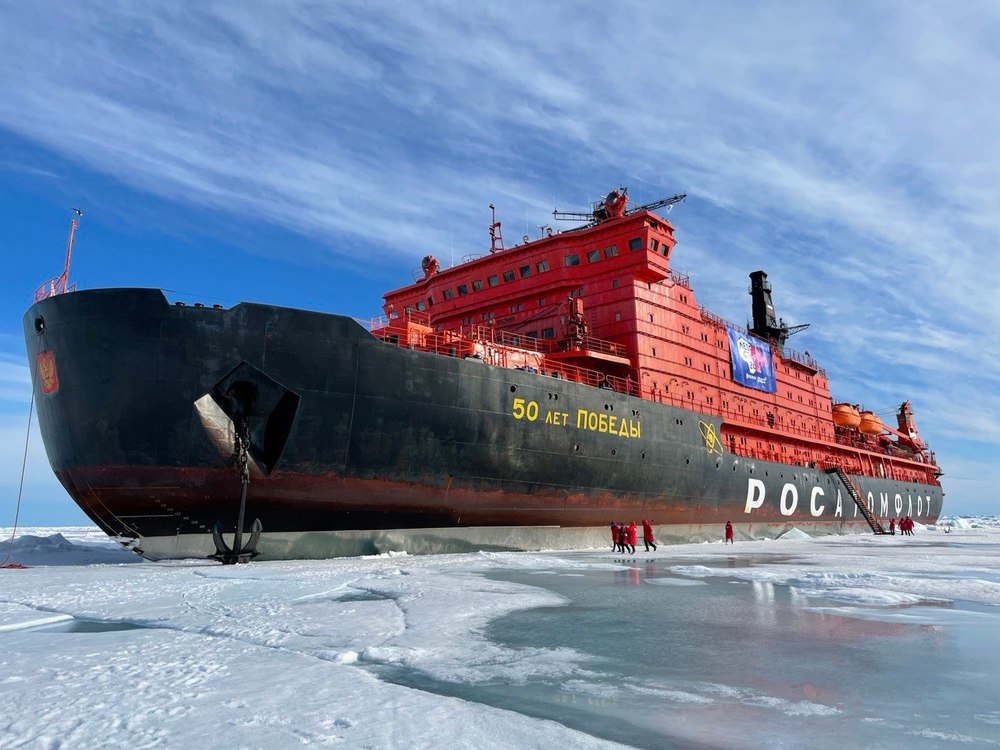
 Photo from the personal archive of Mark Shirchenko
Photo from the personal archive of Mark Shirchenko
— Mark, tell us please how you managed to get on board an ice-breaker and take part in the expedition?
— It was the fourth voyage of the ice-breaker “50 Years of Victory” to the North Pole with schoolchildren on board. This time, the passengers were the winners of the Bolshaya Peremena Competition. The high-school students were accompanied by experts from different areas of knowledge ― physics, digital technology, nuclear power engineering. I was invited as one of the experts in nuclear and particle physics. Last year, I participated in the events of Atomic Energy Information Centres (AEICs), got acquainted and made friends with their staff members. Actually, it was they who invited me to join the expedition as an expert.
 Photo from the personal archive of Mark Shirchenko
Photo from the personal archive of Mark Shirchenko
— How long did the expedition last? Where did it start and what was the route?
— The expedition lasted ten days. This expedition, like previous educational expeditions with schoolchildren on board, started and finished in Murmansk ― the base of the nuclear-powered ice-breaker fleet. The ice-breaker goes without any stops from Murmansk by the archipelago Franz Josef Land to the North Pole. It stays here for 4-5 hours depending on how fast all those involved will make pictures, swim and complete their to-do list. On the way back, passengers visit Franz Josef Land and its bird colony, and then return to Murmansk.
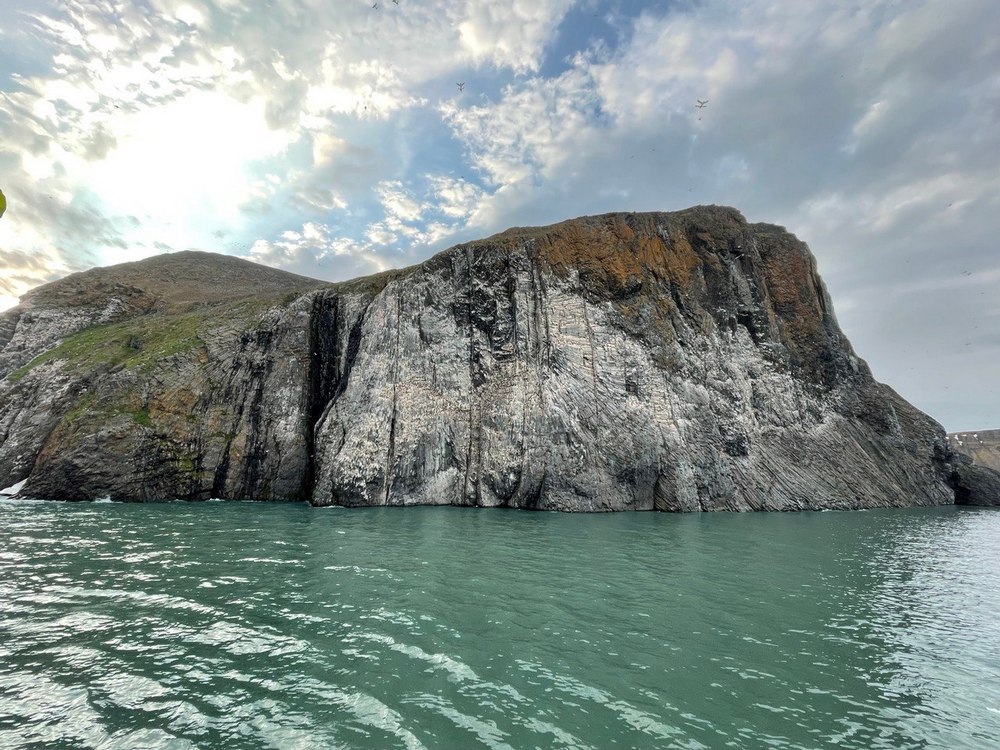 Photo from the personal archive of Mark Shirchenko
Photo from the personal archive of Mark Shirchenko
— What was the life on board like? How was it arranged? What did the expedition members do?
— We lived in a two-berth cabin. I had the one of the head of radiation safety, exactly my profile.
The programme was eventful, the daily routine was absolutely incredible. In the morning, we were woken up by a person from the Guinness World Records, the director of the Museum of Arctic and Antarctic Viktor Ilyich Boyarsky, a great traveller, who traversed the Antarctic on a dog sled. Then, there was a morning workout given by Alla Shishkina, a triple Olympic champion in synchronized swimming. After that, there was a breakfast provided by the chef specially invited with his team from St. Petersburg. After the breakfast, there were awesome lectures given by an ice-breaker designer, by a developer of nuclear reactors, and by a teacher from the Rosatom Corporate Academy (the one who trained speakers well enough to address even the Queen of Britain). There were a lot of other activities except lectures. On the whole, these were fully packed days scheduled in minutes.
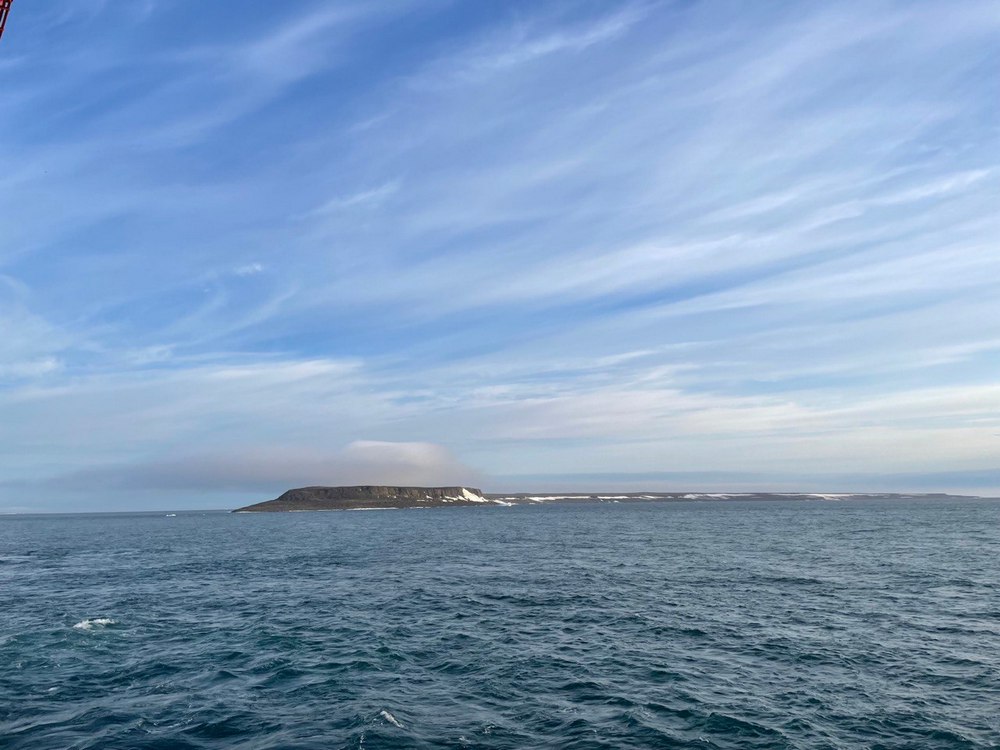 Photo from the personal archive of Mark Shirchenko
Photo from the personal archive of Mark Shirchenko
— What tasks did you have?
— I was an expert in physics within this project. I was to give two lectures, one of which I did not manage to give, so dense was the programme. What I managed to perform (even twice) was actually not a lecture, but rather a talk show «Physics in the TV series “The Big Bang Theory”», so as we did at the JINR Blokhintsev Universal Library last December. I displayed a film fragment and explained physical terms and theories mentioned there.
At the end of the voyage, a tutor of one of the groups of children got ill, and I jumped in for him. It was absolutely unforgettable experience!
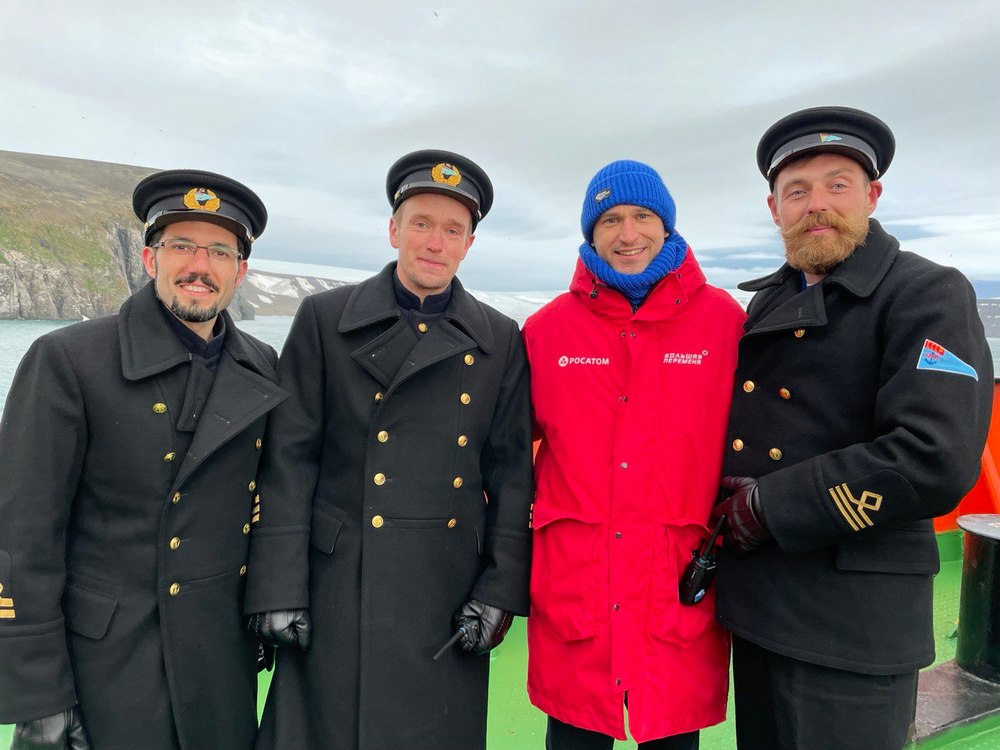 Photo from the personal archive of Mark Shirchenko
Photo from the personal archive of Mark Shirchenko
— How did you spend your day on the North Pole?
— We reached the pole in the morning, at 8:16. We even made bets on who would guess the closest time. Before arriving, the countdown was launched ― 5 km, 4 km, … 1 km to the pole. Then the countdown of the metres left followed. After that, the ice-breaker whistled and started to moor. For a long time, we looked for a right place to moor, and at last stopped and landed.
Three photo zones were set. Everyone could make a picture with the North Pole sign, an anchor, and a rope ― as if you are pulling the ice-breaker by the rope. All of us took pictures and had fun. Later, a video clip was also filmed. I can’t tell you anything about it now, it will be cut only after the expedition. It was funny to be filmed dancing to the clip music. Of course, there was such euphoria that it is impossible to describe it with words.
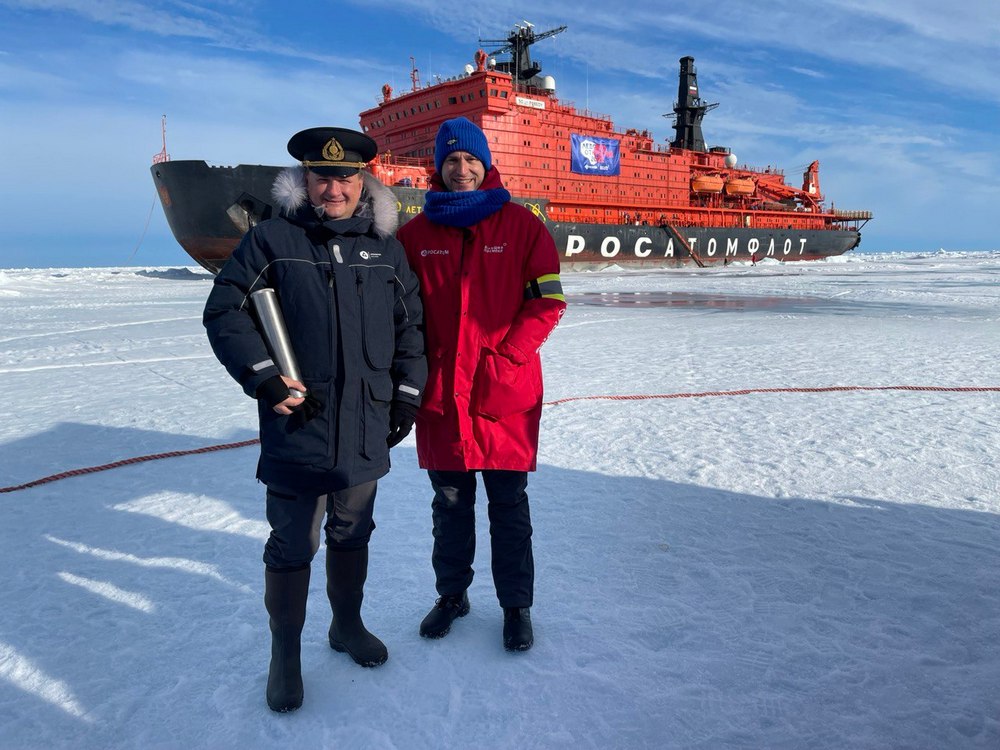 With the captain | Photo from the personal archive of Mark Shirchenko
With the captain | Photo from the personal archive of Mark Shirchenko
— Mark, you are involved in DANSS, a physics experiment studying reactor antineutrino fluxes with a detector located in the very heart of the Kalinin NPP, near the core of the energy reactor of the plant. Did you consider some extension of the experiment with the ice-breaker reactor, it means placing a neutrino detector near it?
— We actually did. It is not so convenient to install it on the ice-breaker since it will not always be accessible. However, the ice-breaker reactor is rather interesting, unusual. It would be helpful if we could do it. Well, these are just ideas.
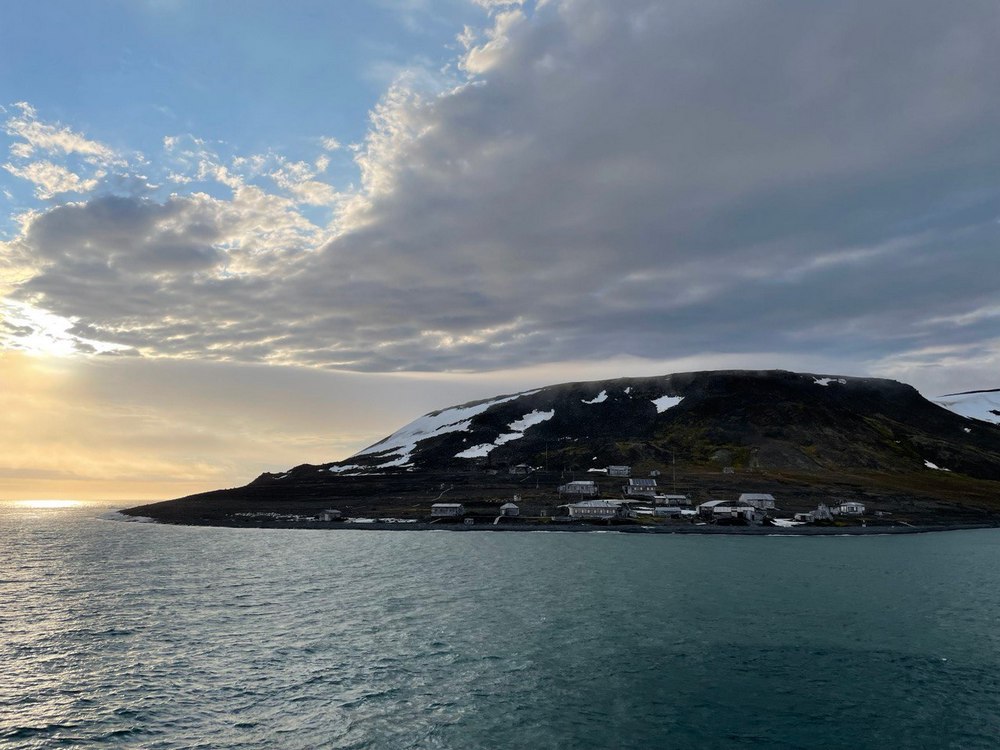 Photo from the personal archive of Mark Shirchenko
Photo from the personal archive of Mark Shirchenko
— What are you feeling now when the expedition is completed?
— I don’t really know. It’s something like, “AAAAA!”. All the emotions were there and then: I returned with shining eyes, and I can’t say devastated, but I just couldn’t think about anything else. And only now, I believe, I probably started coping with it. But till now, I couldn’t manage to find right words for all these emotions.

